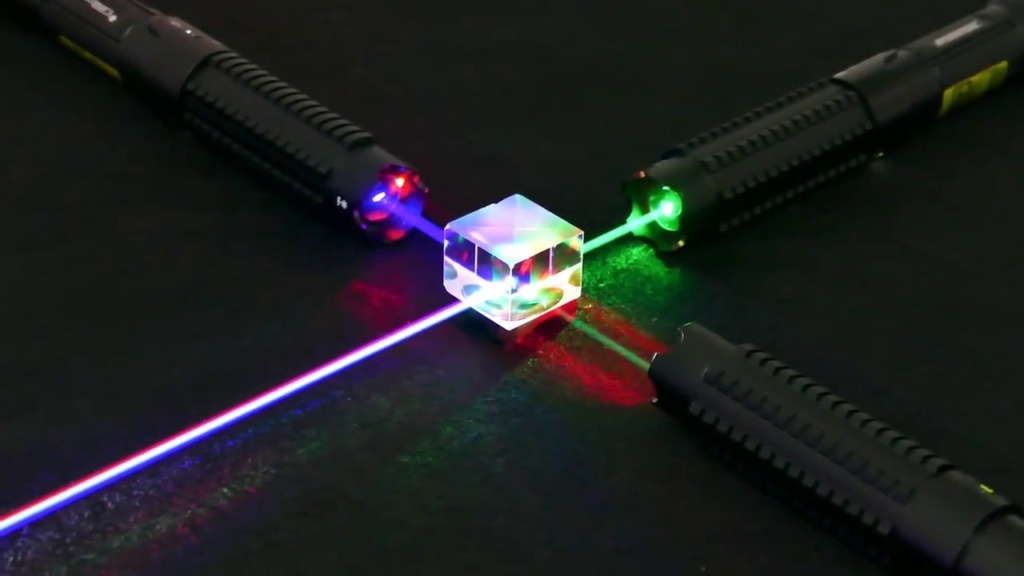
Ever been in a lecture hall and the professor uses a small pen-like device to point out things on the board, even though they are meters away from the board? And in most cases, it is a red dot. Well, wonder no more! What the professor is using is a basic laser pointer device. A typical laser pointer is a handheld device powered by a rechargeable battery that emits a beam of light, intended to indicate something of interest. They are mostly used at schools and business presentations to point out the areas of interest during the presentation. As far as efficiency is a concern, they do the work of reducing the presenter’s movements. Also ensuring that everyone in the room gets to see all the information without being blocked.
There are different types of laser pointers classified in different colors and wavelengths. Each serves a different purpose. Green lasers are the most visible, having a wavelength of 555nm. Red lasers are the cheapest kind of the whole lot with a wavelength of 650nm. There are also the violet lasers used for burning at 405nm. The orange lasers at 635nm are also suitable for burning but are best at close range. Lastly, the most expensive and the most dangerous are the blue lasers.
The uses of these lasers include pointing, either at simple meetings, industrial surveys, scientific research as well as for entertainment purposes. Their applications range from safe to dangerous. And in this article, we shall give you a few things to check to ensure the safe use of these laser pointers.
1. Check for Their Classification
Laser pointers are listed according to their wavelength and output power. The laser classes are ranked on their ability to do harm. The available ranks include 1, 1M, 2, 2M, 3R, 3B, and 4. The higher the number of class, the more dangerous the laser. Each class of laser pointers comes with an indicated Maximum Permissible Exposure level (MPE). These are the levels that a person may be exposed to a specific beam without suffering adverse effects. The lower classes have the most limiting MPE compared to the higher ranks. Smaller classes are safe to use and do not require specific safety controls.
2. Get Informed On The Hazards And Relevant Precautions
From the knowledge acquired from learning about the laser pointers classifications, you should also pay keen attention to the hazards that each class comes with. The most common hazard laser pointers pose to the human body is eye injury. The severity increases with the increasing class. Before one purchase a laser pointer, they should first make sure that the power rating is appropriate for usage. Secondly, while using it, one should avoid pointing the laser into another person’s eye.
3. Requirements For New Laser Users
Whether you intend to use the basic or the powerful laser pointers, there are quite a few things you require. A user must have any relevant laser policy documents and have written risk assessments and procedures associated with the laser system to be used. Another fundamental requirement is for one to be familiar with the MPE calculations. This knowledge goes a long way into ensuring the use of these lasers is as safe as possible.
4. Rule And Regulations On Usage
Lastly, one should be conversant with the laws and regulations associated with the use of these pointers in their country of residence. One should realize that places such as football pitches prohibit the use of laser beams, as they may distract the players or cause eye damage. One might land on the wrong side of the law if found pointing these devices on an aircraft or a law enforcement officer.
Conclusion
As discussed above, we can confidently say that the use of laser pointers can be both fun and dangerous. Therefore, one should be careful not to cause harm at the expense of lack of knowledge or ignorance.
